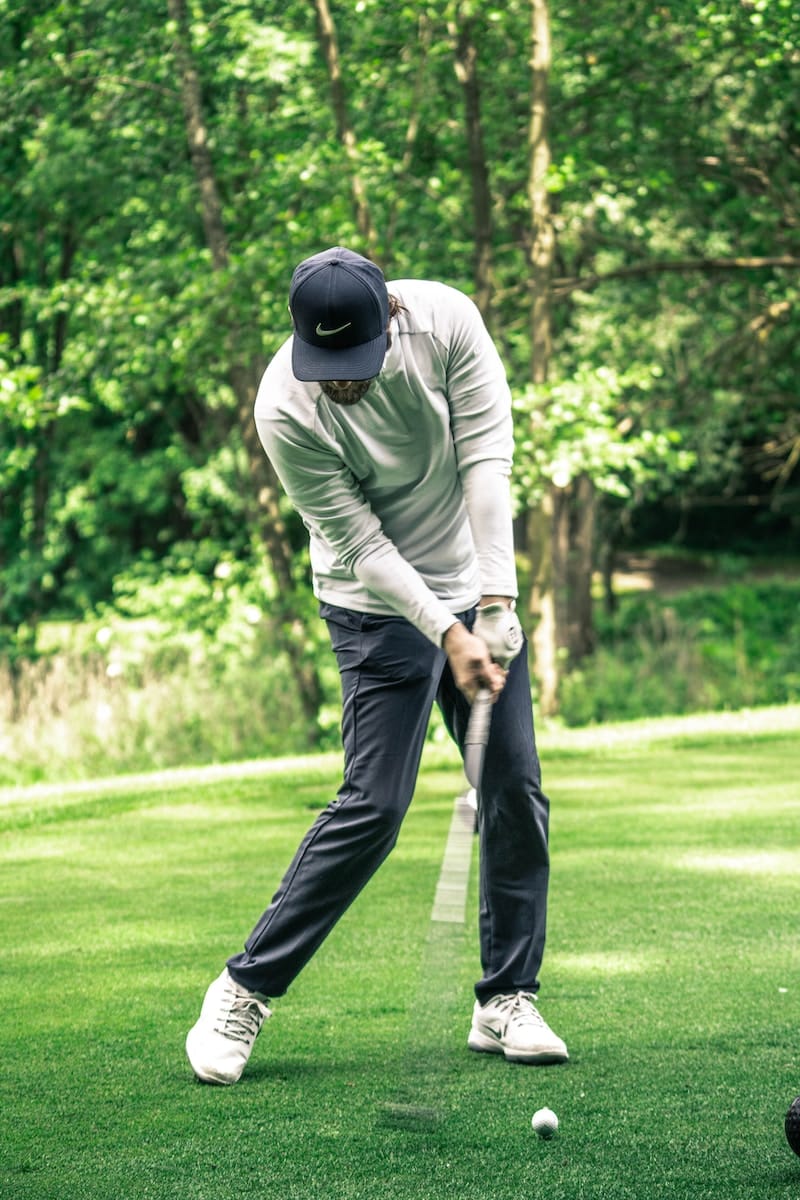Tips to improve your golf swing

Are you constantly on the lookout for ways to improve your golf game? The key to a better game often lies in the swing. A good swing can make all the difference in the world when it comes to the success or failure of your shot. In this comprehensive guide, we will delve into six crucial aspects of the golf swing and offer tips that will help you enhance your game.
Perfecting Your Grip
A good grip is the foundation of a great golf swing. Your grip affects the club’s impact on the ball, determines the flight path, and influences your ability to hit the ball with power and accuracy.
Sujet a lire : The history of martial arts around the world
To improve your grip, start by holding the club in your left hand (for right-handed golfers), letting it rest diagonally across the fingers. The thumb should point downwards towards the clubhead. Add your right hand so that the lifeline of your right hand sits snugly on the left thumb. The thumb and forefinger of both hands should form a ‘V’ shape aiming towards your right shoulder.
Tip: Experiment with pressure. A grip that is too tight will hinder your wrist hinge, while a loose one will cause the club to move around during the swing. The grip should be firm yet comfortable.
A lire également : Handball: basic rules and strategies
Aligning Your Body
Proper alignment is critical in golf, as it helps you maintain balance and directs the ball towards the target. If your body is aligned correctly, it will enhance your swing and improve the accuracy of your shots.
When you are preparing to hit the ball, your feet, hips, and shoulders should be parallel to the target line. Make sure your leading foot (the left for right-handed golfers) is slightly open to allow for a full hip turn during your backswing. Also, your clubface should be square to the target line.
Tip: Use practice rails. They are a great tool to help you visually align your body correctly and consistently.
Mastering the Backswing
The backswing sets the tone for your shot. A well-executed backswing will set you up for a powerful and accurate impact on the ball.
To perfect your backswing, ensure you have the right tempo. The key is to start the swing slow and smooth, turning your hips and shoulders as you swing the club back. By the time the club reaches the top of the swing, your shoulders should be turned 90 degrees, and your hips about 45 degrees.
Tip: Practice mirror checks. Regularly check your backswing positions in a mirror to ensure your body turns are accurate.
Executing the Downswing
The downswing is when you bring the club down and hit the ball. It is crucial that the downswing is initiated by the lower body, not the hands or arms, to ensure maximum power and accuracy.
Start the downswing by rotating your hips towards the target. As the hips turn, let your upper body follow. Make sure your hands stay back and allow the club to drop into the ‘slot’ for a powerful, inside-out swing path.
Tip: Visualize a ribbon tied around your hips. Imagine pulling the ribbon towards the target to initiate the downswing.
Managing Clubface Impact
The moment of impact is when your clubface hits the ball. Properly managing impact is essential for directing the ball to your intended target.
It’s important to hit the ball with the center of the clubface. To achieve this, focus on maintaining a steady head position throughout your swing. Also, practice keeping your left wrist flat (for right-hand golfers) at impact.
Tip: Use impact tape. It’s a useful tool that shows where the ball is striking the clubface and helps you adjust accordingly.
Finishing the Swing
The finish is the final stage of the golf swing. A good finish is an indicator of a swing that has maintained balance and rotation.
After impact, continue to rotate your hips and shoulders towards the target. Your body should end up facing the target with your weight primarily on your front foot. The club should wrap around your body, with the butt end pointing at the target.
Tip: Practice holding your finish. It will help maintain balance and reinforce a complete rotation in your swing.
By applying these tips and practicing them over time, you will see noticeable improvements in your golf swing and overall game.
Conditioning Your Body for a Better Golf Swing
Maintaining good physical condition is essential for a great golf swing. A strong core and flexible muscles provide the stability and power needed to swing the club effectively. The golf course can be unforgiving, and the better your physical conditioning, the more consistent your game will be.
The core muscles, including your abs and lower back, play a significant role in generating power and controlling the swing. Strengthening these muscles will help you maintain balance, control rotation, and generate speed. Simple core exercises such as planks and kettlebell swings can make a noticeable difference.
Flexibility is another critical factor. The more flexible you are, the greater your range of motion, which allows for a more efficient swing. Incorporate flexibility exercises targeting the hips, torso, and shoulders into your fitness routine. Yoga is a great option, with poses like the warrior and the downward dog offering excellent benefits.
Tip: Create a golf-specific workout routine. Regular exercise focusing on your core and flexibility can significantly improve your golf swing.
Understanding Your Golf Equipment
Understanding and correctly using your golf equipment can significantly impact your swing and overall game. From your driver to your golf ball, every piece of equipment plays a unique role that can make or break your shot.
For instance, the length, weight, and flex of your golf club can dramatically affect your swing. A club that’s too long or too heavy can throw off your balance, while a club with the wrong flex can affect the trajectory of the ball. Knowing these nuances will help you choose the best golf equipment for your game.
The type of golf ball you use is also essential. Different balls offer varying levels of spin, distance, and control, so it’s important to select a ball that complements your game. Experiment with different balls and note their impact on your shots.
Tip: Get a club fitting. This will ensure that your clubs match your physical specifications and swing characteristics, allowing for a smoother, more efficient swing.
Conclusion
Improving your golf swing is a continuous journey that requires time, patience, and dedication. Whether you’re practicing your grip, mastering your backswing, executing the downswing, managing clubface impact, or finishing the swing, every step matters. Physical conditioning and understanding your golf equipment are equally vital for a better golf swing.
Remember to keep your body in good shape and choose the best golf equipment that suits your game. Use the swing tips provided in this guide and spend ample time practicing on the golf course. With time and consistent effort, your golf swing will undoubtedly improve, leading to a more enjoyable and successful game. Stay patient, keep practicing, and the results will come.
